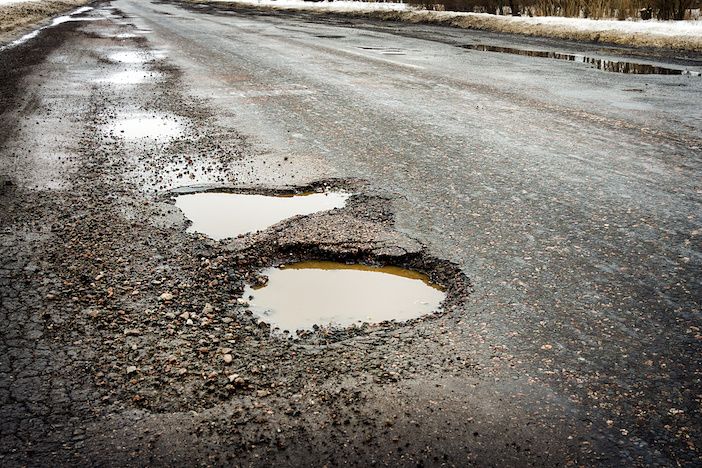This week (ends March 22, 2024) a damning report from the Asphalt Industry Alliance (AIA) said that roads in England and Wales are at “breaking point.” Councils are said to have over 2 million potholes to fix, which is up 43% on last year and the highest annual total for eight years.
So what is the solution? Keep patching up crumbling road surfaces? Resurface completely and wait for the problem to come back in a few years’ time? Or is there another way. In this feature Tom Stone discovers that there is… high-tech surfaces are available that are super durable and though more expensive to produce, will save money on maintenance in the long term.
When looking for similarities between countries it can’t be often that New Zealand and Ethiopia are mentioned in the same breath. But this is exactly what researchers at Birmingham University in the UK are doing as they test and evaluate the effectiveness of the novel surfaces that could be key to making roads around the world more efficient and resilient to climate extremes.
In a new research project entitled CRISPS (Climate Resilient Sustainable Road Pavement Surfacings) academics are working with the Ethiopian Roads Administration (ERA) to develop ways of future-proofing the country’s road network against the effects of climate change – helping to maintain and improve quality of life in Ethiopia.
The findings and techniques used in the road surfacing project could have implications not only for other low-income countries, but also developed nations – indeed a partner in the project is University of Auckland, because in New Zealand the novel road surfaces being studied are already in general use.
“Millions have been spent on building roads [in Africa], but because of the lack of maintenance, some of these roads are now worse than they were before they built them”
Gurmel Ghataora, University of Birmingham
The surfaces being investigated are more expensive than regular asphalt, but the benefits come in the fact they are low-maintenance. “If you just want to build a road for 10 years, this is probably not the stuff. But if you want to make the road last longer, then it’s worth making a higher investment at the front end,” says Gurmel Ghataora, who is a senior lecturer at University of Birmingham and as a geotechnical engineer is working closely with the ERA on laying trial sections of roadway using the novel materials.
“We know that in many parts of Africa, funding for building new roads can come fairly easily from various donor organizations, but maintaining them is the real challenge,” continues Ghataora. “Millions have been spent on building roads, but because of the lack of maintenance, some of these roads are now worse than they were before they built them.”
Beneath the surfaces
The long-life road pavement surfacings being trialed in CRISPS are of three types: epoxy modified chip seals (EMCS), epoxy modified asphalt surfaces (EMAS) and fiber mastic asphalt (FMA).
Adding epoxy to bitumen is a technique that is already over 50 years old. It was initially developed in the UK by Shell for making asphalt runways heat resistant to jet exhaust. Since then, it has often been used on bridge decks, but rarely on regular roads until it was recently adopted by New Zealand. Some countries in Europe are now considering using it more widely. “It makes the bitumen last five times longer. So instead of doing maintenance every 14 years, in theory it can be done every 60 years,” says Dr Michael Burrow who is a leader on the CRISPS project, a reader in infrastructure asset management in the Department of Civil Engineering at University of Birmingham and an expert in transportation lifecycle modeling.
FMA is a more recent technique, developed in Malaysia (University of Putra Malaysia is another partner in this project), which involves putting fibers into road materials.
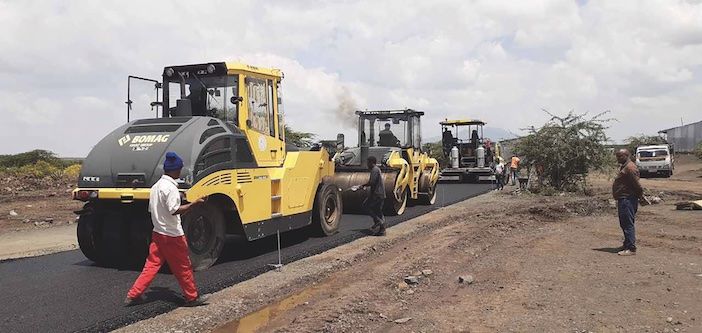
“People normally add organic fibers to stop drain down,” says Gahatora. “It stops the bitumen running out from the aggregate – the fiber helps to hold it in place. Some have used it to give flexual strength. But this is the only one with natural fiber we’ve come across, which actually gives surface strength.”
“We’re using palm fiber for this,” says Dr Burrow. “People might think it is not a sustainable product, but in fact we are only using wood from sustainable sources.”
“We’re not funding new plantations,” confirms Ghataora “This material is extracted from a waste from the palm oil industry. They don’t know what to do with it, they’re burning it and doing all sorts of other things with it, which are potentially not as good as this. So, we’re actually reducing the amount of waste.”
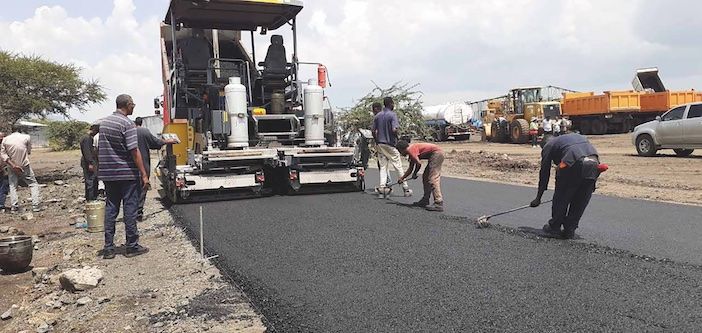
Nevertheless, in order not to become reliant in the future on an industry known for its environmental destruction, new research is underway. “We have an additional PhD project investigating other natural fibers that we could use, other than palm fibers,” says Burrow.
“Both technologies [epoxy and fiber] are immensely beneficial in developing countries where there is a huge problem with road maintenance, which is only going to get worse as climate becomes more extreme and economies grow, creating more traffic – roads are getting pounded by both,” says Ghataora.
Modeling the future
While the argument for building more resilient roads in Africa where road maintenance problems are highly visible is reasonably straightforward, do these novel surfaces also make sense in Europe and the USA? And if so, how can road authorities be convinced they are necessary?
“Epoxy surfaces are expensive. I think one of issues,
which is simple but quite difficult to address, is we have a natural tendency to look for things that are cheaper and we don’t take a longer-term view,” says Burrow. “We look very much of at budgets year-by-year because we never know what our budgets are going to be for the future.”
A way in which one can get a better idea of what the future will bring is by using a modeling tool called the Highway Development and Management Model Four (or HDM-4 for short). This has been developed by the World Bank over the past 60 years and University of Birmingham has lead research around it for the last 20. Dr Burrow is an expert user.
“We’re fixing potholes and we shouldn’t be – we should be making roads last longer”
Dr Michael Burrow, University of Birmingham
“It’s an economic tool, which allows you to consider road use costs, initial costs, maintenance costs and downstream costs of a strategy,” he explains. “You can assess a material in terms of both durability and economic performance. For different scenarios – climate, traffic, etc. You can then demonstrate, on an economic basis, which is more appropriate. If you take a short-term view – 10 years – then your existing materials tend to come out on top. They have lower, what we call total transport costs, lower combination of road use costs, and initial cost of maintenance, because you haven’t taken into account the durability. At 30-50 years the epoxy type materials show much greater economic benefit.”
But with so many other draws on public money road building can be seen as low priority, especially as there is a drive to make movement of people and goods more multimodal. “By doing this sort of economic analysis you can start to demonstrate the argument that we can reduce costs, and map out the wider economic benefit,” says Burrow. “We’re fixing potholes and we shouldn’t be – we should be making roads last longer.”
Furthermore, higher quality roads have associated benefits beyond simply lowering maintenance costs. A smooth surface means less fuel must be burned by the vehicles traveling on it, creating economic and environmental benefits. “The smoother the road, the less cost there is to road users, and the lower emissions are,” says Burrow. “Other things like travel time and accident costs are reduced, and so on. This needs to be balanced versus cost to maintain at that high level.”
A final point worth noting is the HDM-4 modeling can confirm what road mangers the world over already know – it’s not cars that cause most damage to roads, but trucks, particularly ones that are overweight. “In developing countries overloading is a massive issue because they don’t have the capability for policing that we have,” says Burrow. “But modeling also shows that these novel surfaces are much more resilient to overloading.”
Quality control
Once a road authority makes the choice to opt for one of the super-resilient road surfaces being studied in the CRISPS project, there’s a final important piece of the jigsaw that must not be forgotten and that’s quality control.
If epoxy- or fiber-enhanced asphalt is not correctly produced it will not have the correct hard-wearing properties, therefore some specialist testing must be employed ahead of laying the surface to ensure it meets standards before it’s in the ground and too late to change.
“We do trials during the mixes and get universities on board to assist with testing, because the road organizations don’t have such facilities,” says Ghataora. “We use X-ray techniques and, in Birmingham, a neutron accelerator. But no doubt once this takes off, there’ll be other simpler testing devices coming down the line. In Ethiopia we found the University of Addis Ababa has the necessary equipment and people with expertise in testing chemicals, so they can then work with the road agency to test their materials.”
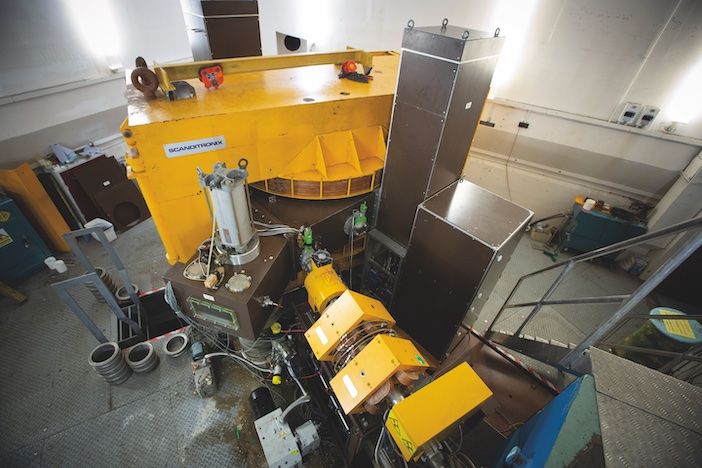
The neutron accelerator-based test, known as Fast Neutron Activation Analysis (FNAA) was devised at Birmingham University and is recognized as the ‘gold standard’ for this type of materials analysis, but there are only a few of these neutron facilities in the world.
“University of Texas also has a neutron facility, similar to what we have in Birmingham, where they do testing for epoxy materials used for the high-traffic roadways in New Zealand,” says Burrow. “Alternatively, there’s the FTIR (Fourier-transform infrared spectroscopy) X-ray based test, that’s already used on bituminous roads. So ideally, if a road authorities have a new material, they would use these, the FTIR tests – if they can’t use the gold standard – and then say, okay, that’s the specification we ordered.”
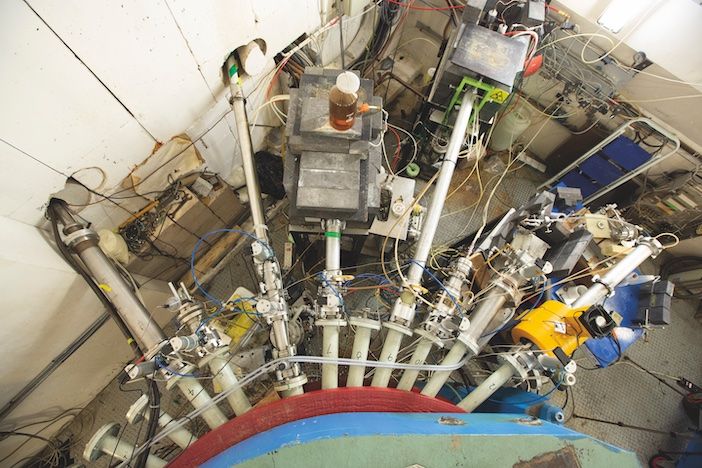
The project as a whole touches on the very heart of the age-old challenges for asset management in transportation. “It’s about using the resources we have in the best way possible to benefit society,” says Burrow “It might mean things initially cost more, but they last longer. And if the cost of the environment is lower, then that’s even better.”
This feature first appeared in the March 2023 edition of TTi magazine, where you can read an extended version with information on using recycled plastic in roads and also building highly durable roads at speed in Texas


